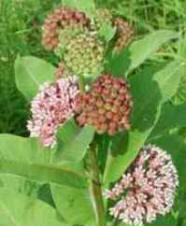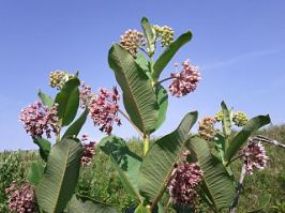References
Agrawal, A.A. 2004. Resistance and susceptibility of milkweed:
competition, root herbivory, and plant genetic variation. University
of Toronto, Ontario, Canada. 85: 2118–2133.
Agrawal, A.A. and M. Fishbein. 2008. Phylogenetic escalation and
decline of plant defense strategies. Stony Brook University, Stony
Brook, NY. 105: 10057-10060.
Anderson,W.P. 1999. Perennial Weeds: Characteristics and
identifications of selected herbaceous species. Iowa State
University Press.
Klips, R.A., and T.M. Culley. 2004. Natural hybridization between
prairie milkweeds, Asclepias sullivntii and Asclepias syriaca:
morphological, isozyme, and hand-pollination evidence. International
Journal of Plant Sciences 165: 1027-1037.
National Parks Service 2013. <URL:
http://www.nps.gov/fiis/naturescience/monarchbutterflies.htm
>.
Accessed 1 April 2013.
Morse, D.H. 1994. The role of self-pollen in the female reproductive
success of common milkweed (Asclepias syriaca: Asclepiadaceae).
American Journal of Botany. 81: 322-330.
Oberhauser, K.S. and M.J. Solensky. 2004. The monarch butterfly:
biology and conservation. Cornell University Press, Ithaca, New
York, USA.
Shore, J.S. 1993. Pollination genetics of the common milkweed,
Asclepias syriaca L. Heredity. 70: 101-108.
Spiridon, I. 2007. Modifications of Asclepias syriaca fibers for
paper production. Industrial Crops and Products. 26: 265-269.
Thayer, S. 2006. The forager's harvest: a guide to identifying,
harvesting, and preparing edible wild plants. Forager's Harvest,
Omega, Wisconsin, USA.
University of Pennsylvania poisonous plants 2002. <URL:
http://cal.vet.upenn.edu/projects/poison/plants/ppmilkw.htm
>.
Accessed 1 April 2013.
Visit the contact me page for feedback, otherwise return
home.

 wikimedia
wikimedia